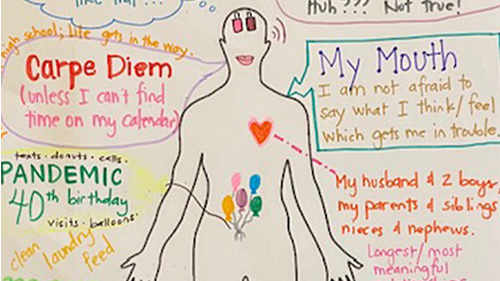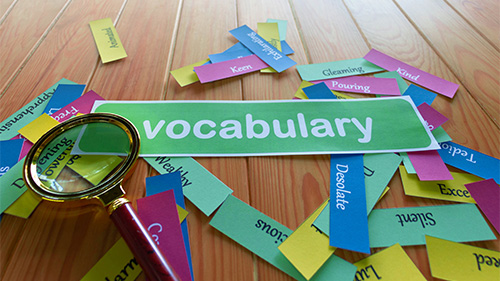ELA: Instagram Activity for Learning Vocabulary
For this activity, students are tasked with creating an Instagram post imagining that their assigned vocabulary word was a person posting on social...
AP & Honors Mathematics
Explore Wiley titles to support both AP and Honors mathematics instruction.
Literacy Skills & Intensive Reading
Connections: Reading – Grades 6–12
Empower student success with a proven intensive reading program that develops strong reading skills in striving readers.
Drama, Speech & Debate
Basic Drama Projects 10th Edition
Build students’ confidence and competence with comprehensive, project-based theatre instruction.
Literature
Connections: Literature
Support learners as they study dynamic, relevant texts and bring the richness of diverse voices to students through literature.
Literature & Thought
Develop critical thinking, reading, and writing across literacy themes, genres, historical eras, and current events.
Language Arts
Vocabu-Lit® – Grades 6–12
Help students build word power using high-quality contemporary and classic literature, nonfiction, essays, and more.
Connections: Writing & Language
Help students develop grammar, usage, mechanics, vocabulary, spelling, and writing and editing skills.
Reading/English Language Arts
Measuring Up to the English Language Arts Standards
Incorporate standards-driven teaching strategies to complement your ELA curriculum.
English Language Learners
Measuring Up for English Language Learners
Incorporate research-based best practices for ELLs with an approach that includes a focus on language acquisition strategies.
Mathematics
Measuring Up to the Mathematics Standards
Incorporate standards-driven teaching strategies to complement your mathematics curriculum.
Foundations
Measuring Up Foundations
Help students master foundational math skills that are critical for students to find academic success.
Science
Measuring Up to the Next Generation Science Standards
Give students comprehensive NGSS coverage while targeting instruction and providing rigorous standards practice.
Assessment
Measuring Up Live
Deliver innovative assessment and practice technology designed to offer data-driven instructional support.
For a better website experience, please confirm you are in:
Teaching vocabulary—integrated into a text or isolation can be tricky when it comes to thinking of engaging ways to create meaning. We fall back on the old “write a sentence that shows the meaning of the word” assignment. But we all know that when students are developing an understanding of a word, they often fail to show the meaning of the word or use it as the wrong part of speech. This only strengthens an incorrect understanding of the word’s use. Here are three ways to have the students create meaning for themselves that develops lasting memory aids for them:
Many of us know the song with this title from Sesame Street where children are presented with four things and they have to determine which “doesn’t belong.” Here is an example from the show in case you or your students don’t know this game. In the context of vocabulary acquisition, you present the students with a group of four or five vocabulary words. They have to determine which word doesn’t belong as well as provide a detailed example of why it is the outlier using knowledge of the definitions and parts of speech.
Using the idea that all people are six or fewer social connections away from each other, students will have to create connections and provide explanations for getting from the first word to the final word. You present the student with a beginning vocabulary word and an ending word. They have to use the other vocabulary words to create those connections to link the first word to the final word in fewer than six vocabulary words. Students could use parts of speech, categories based on definition, language of origin, or anything else they see as a pattern.
I think of this as creating mini-Venn diagrams for word pairs. Students would partner words and then in the middle of the paper, create a mini-Venn Diagram, in which they list shared characteristics between the two words and then in the outer parts list how the words differ. If you want to increase the difficulty, students could have to then link a “differences” part of the Venn diagram to another word, making a Venn diagram chain, if you will.
The reason I love these activities is because the students ALWAYS think of ways to connect words that I never did. There is no “right” answer. It all depends on relationships between words that each student sees, which then makes it meaningful to them. When sharing their ideas, these activities spark really intelligent conversations among the students that require them to be able to defend their choices. This past year, I used the first activity on a cumulative, 100-word vocabulary test and was blown away by the students’ understanding of the words. I do not doubt that these activities created memorable ways for students to not just recall words for a test or quiz, but plant them in their long-term memory which is what we as teachers of language want.

For this activity, students are tasked with creating an Instagram post imagining that their assigned vocabulary word was a person posting on social...

As a public educator, one of the most vital things that I try to get my students to understand is how all the information they learn works together...
.jpg)
While most early literacy development occurs in elementary school, teachers in middle and high schools continue shaping students' reading abilities,...

Annotation is a life skill, especially for our college-bound students. Reading something with a purpose, a strategy to comprehend at a higher level,...

Transitional literacy focuses on bridging the gap between basic reading skills and more advanced literacy skills necessary for success during middle...

I don’t know about you, but I hate grading reading comprehension questions. First of all, the answers usually could be “borrowed” from websites like...

When the calendar gets crowded with winter concerts, makeup quizzes, assemblies, and general mid-year chaos, the idea of doing a full close-reading...

We’ve heard of Project-Based Learning (PBLs), which allows students to mostly have independent leadership through a task or project and creative...

If you teach seniors, you probably spend time on writing strategies for the dreaded college essay. Jennifer Nash provides a way to lead into teaching...

Several years ago, I began using a 4-point Student Engagement rubric for assignments that were either early in the knowledge acquisition period or...

Light the menora, hang the mistletoe, and slip on your fuzzy socks—here are 6 YA books that will help get you in the holiday spirit!

Laura Kebart (English Language Arts Teachers) shares strategies for 6-8 ELA teachers for creating rubrics that center student improvement. {%...

